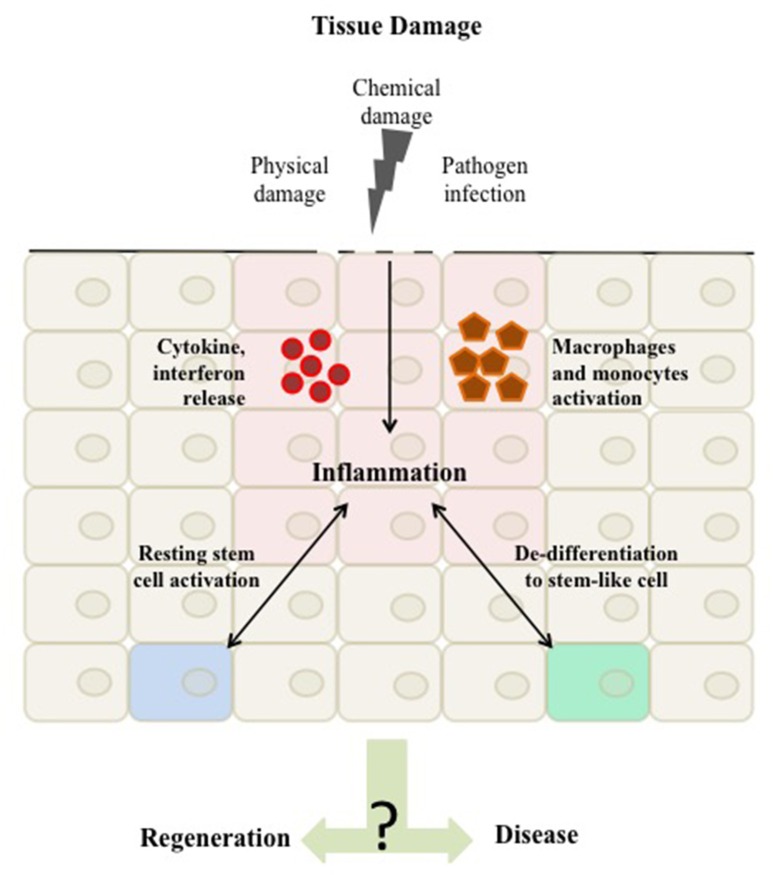Figure 1.
Tissue damage can arise as a result of physical damage, chemical damage or pathogen infection. Once the damage is detected a homeostatic inflammatory response is activated to regenerate the tissue. This inflammation is characterized by the activation of immune cells, such as macrophages and monocytes and the release of inflammatory mediators, such as cytokines and interferons to the site of damage. These mediators in turn can affect native tissue cells to respond by migrating and proliferating resulting in tissue repair. Evidence suggest that the inflammatory response acts as a regulator of tissue stemness either by directly affecting tissue stem cells or by shifting differentiated cells toward a stem-like cell character. The balance in this inflammatory response and its mediated stemness is a critical driver of either maintaining tissue integrity or promoting aberrant homeostasis and disease.

